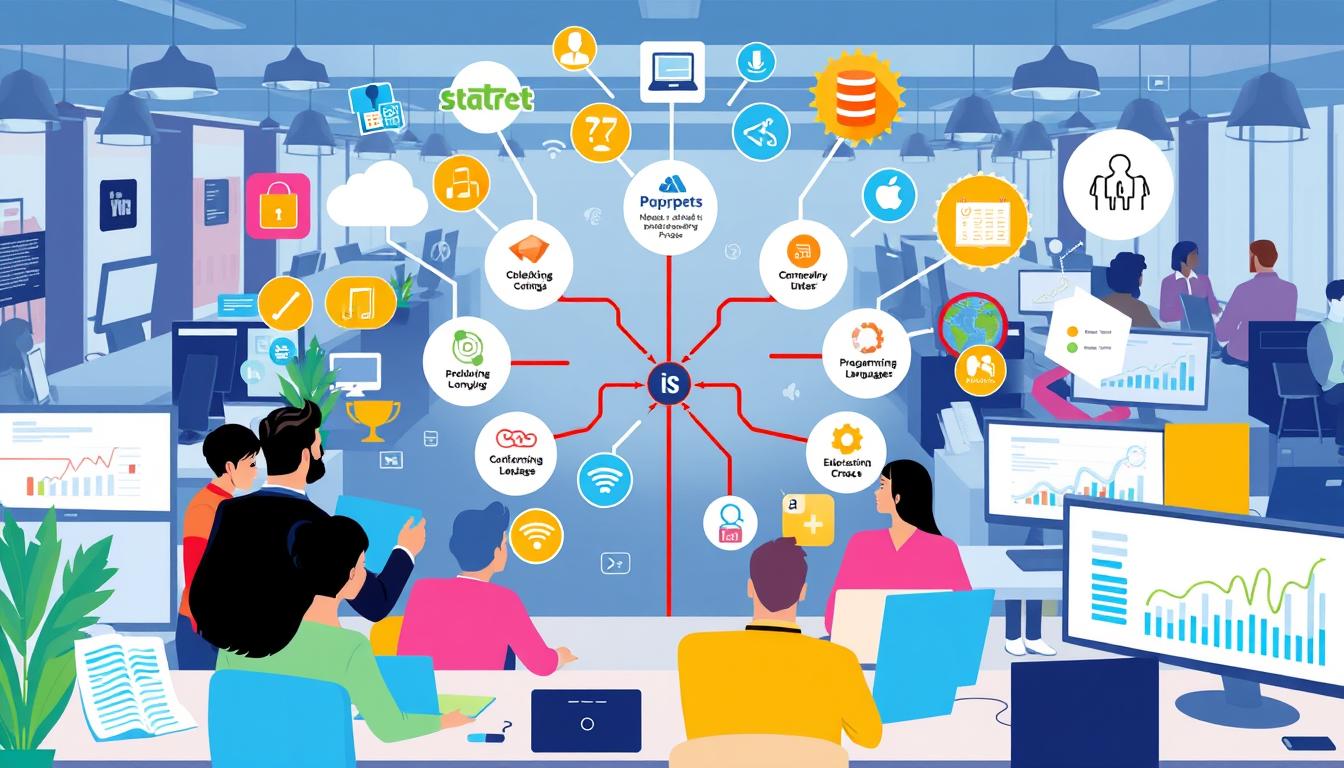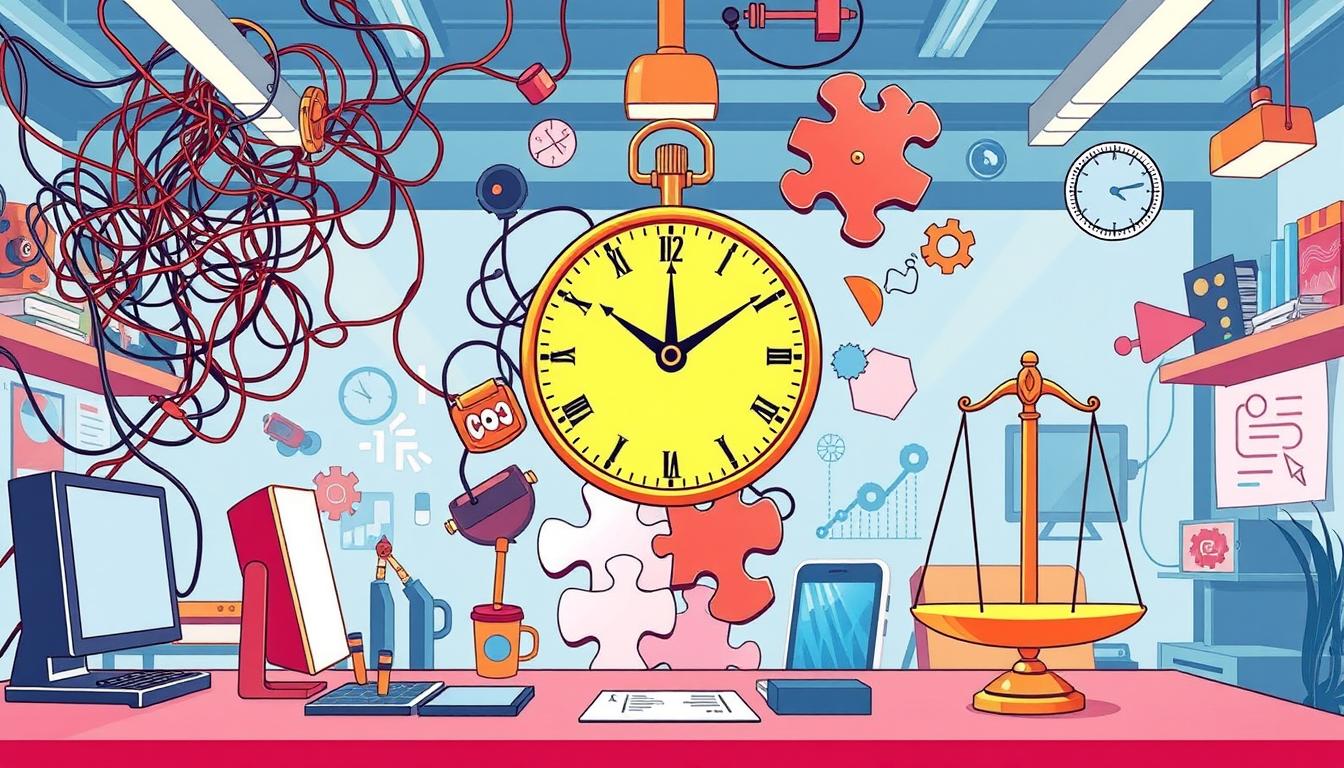The Minimum Viable Product (MVP) is key for new businesses to test ideas with little cost. Big names like Dropbox, Figma, and Uber have used it. In 1999, Nick Swinmurn started Zappos with just a basic website to check if online shoe sales worked.
An MVP is a simple version of a product with the most important features. It helps businesses get to market fast, attract early users, and find their product-market fit early.
For startups, making an MVP is vital. It lets them check if their ideas work, get feedback from customers, and improve their products before spending a lot1. A survey by CB Insights found that 42% of startups fail because they don’t meet market needs1. Also, 29% fail because they run out of money1. But, startups that grow smartly can expand 20 times faster than those that grow too fast1.
Key Takeaways
- An MVP is a crucial strategy for validating business ideas and achieving product-market fit with minimal investment.
- Developing an MVP can help startups avoid common pitfalls, such as running out of cash and scaling too quickly.
- The MVP concept originated in 1999 and has been successfully used by leading companies like Dropbox, Figma, and Uber.
- An MVP is defined as a basic, launchable version of a product with minimal yet essential features.
- Startups that scale properly grow 20 times faster than those that scale prematurely.
Understanding Minimum Viable Product: Core Concepts and Benefits
The Minimum Viable Product (MVP) has changed how companies launch new products2. It was first introduced by Frank Robinson in 2001. Since then, it has become a key way to test ideas and get feedback from users2.
An MVP is the simplest version of a product that meets early customers’ needs3. It helps businesses learn and grow, testing ideas before spending a lot of money3.
Key Benefits of MVP Development
- It’s a safe way to test ideas before spending a lot of money3.
- It saves money and gives insights into what users want3.
- It shows investors that a product idea is worth investing in3.
- It lets businesses keep improving their product based on what users say3.
Purpose and Goals of MVP Creation
The main goal of an MVP is to check if a product idea works and get feedback from users4. By starting with a basic product, companies can see if there’s demand without fully developing it4. This way, they avoid wasting money on products that might not sell4.
The Evolution of MVP Methodology
The idea of MVP has grown, with new ideas like Minimum Lovable Product (MLP) and Minimum Marketable Product (MMP)2. MVP focuses on the simplest features, MLP aims for the highest value, and MMP is ready for sale2.
Using agile frameworks like Jira has made MVP development better2. It helps teams work together and plan their product roadmap better2. By using MVP, companies can be more agile, reduce risks, and make products that meet their audience’s needs. Digital brand-building strategies can also help make sure customers have a consistent experience3.
Market Research and Problem Validation Strategy
Doing thorough market research and checking if your MVP solves a real problem are key steps. CB Insights found that most startups fail because they don’t meet market needs5. To avoid this, it’s important to look at competitors, find your audience, and figure out the market size6.
It’s vital to test your idea before spending too much on development. This saves resources and makes sure there’s a real need for your MVP5. You can do this by doing user surveys, looking at what competitors offer, and seeing how your idea stands out6.
User testing and customer research help you understand what your audience needs and likes7. This info helps you make your product-market fit better and make sure your MVP solves the right problems6.
| Validation Technique | Benefits |
|---|---|
| Split testing (A/B testing) | Tests website or product elements to determine which options gain the most traction6. |
| Effective ad campaigns | Validate an MVP through platforms like Google and Facebook, allowing for specific demographic targeting6. |
| Crowdfunding platforms | Provide alternative funding methods and serve as MVP testing grounds6. |
| Pre-orders for upcoming products | Validate market interest and willingness to pay, especially for well-established companies6. |
| Customer interviews | Provide actionable insights and reveal target audience problems that a survey might miss6. |
By focusing on market research and problem validation, startups can make an MVP that really connects with their audience7. Knowing the market and your customers well is key to a successful MVP launch and ongoing development5.
Using these validation methods can guide your MVP development. It ensures your product solves the right problems and meets your audience’s needs7. By putting market research and problem validation first, startups can boost their chances of finding product-market fit and creating a successful MVP5.
Essential Steps in MVP Development Services
Creating a successful minimum viable product (MVP) is a detailed process. It needs careful planning and execution. The key steps include knowing your target audience, creating a strong value proposition, and setting a realistic timeline and budget8.
Defining Your Target Audience
Understanding your target audience is the first step. You need to look at their industry, demographics, and what they value. Also, consider their pain points and how they buy things9. By focusing on your main audience, you can make a product that really meets their needs9.
Creating a Value Proposition
A strong value proposition is key to attracting and keeping customers. It should clearly show what makes your product unique and why it’s better than others9. Highlight your product’s features and how it solves problems for your customers9.
Setting Development Timeline and Budget
Having a clear timeline and budget is crucial for making an MVP. The time it takes to develop can vary, from a few days to months8. The whole process can take anywhere from 2 weeks to 8 months8. The cost can range from $40,000 to over $300,000, which is 10-50% of the total software cost8.
| Aspect | Range |
|---|---|
| Development Stage | 2-5 days (no-code/low-code) to 6 months (code-based) |
| Delivery Time | 2 weeks to 8 months |
| Development Cost | $40,000 to $300,000+ (10-50% of total software cost) |
By knowing your audience, creating a compelling value proposition, and setting a realistic timeline and budget, startups can launch their MVP. This way, they can test their business ideas through low-risk development and mvp launch strategy9.
Feature Prioritization and Product Roadmap
When making a Minimum Viable Product (MVP), picking the right features is key. It stops the product from getting too big and keeps it focused on the basics10. An MVP lets companies test a basic version of their product with little effort and resources10. It’s important to choose features that solve the main problem and meet user needs.
Story mapping is a good way to pick MVP features. It uses a chart to show the user’s journey and the priority of each feature10. This helps keep track of features and decide what to include first in the MVP10. The goal is to pick features that add value to customers efficiently and cost-effectively10.
There are other ways to prioritize features too. The MoSCoW method sorts features into Must-haves, Should-haves, Could-haves, and Won’t-haves11. The Kano model groups features into Basic expectations, Performance attributes, and Excitement factors11. Working with teams and thinking about user needs and business goals helps prioritize features well.
| Feature Priority | Description | Example |
|---|---|---|
| Must-have | Critical features that are essential for the MVP to function and address the core problem | User registration, product search, and checkout process |
| Should-have | Features that are important but not critical for the initial MVP release | Personalized recommendations, social sharing, and advanced filtering |
| Could-have | Features that would be nice to have but are not essential for the MVP | Loyalty program, virtual try-on, and augmented reality integration |
| Won’t-have | Features that are not necessary for the MVP and can be deferred to future iterations | Complex analytics dashboards, multi-language support, and advanced reporting |
By focusing on features that have a big impact, take a lot of effort, and have some risk, companies can make a strong MVP11. This approach helps the product launch well and sets the stage for future improvements.
Design and Prototyping Techniques
Creating a user-friendly interface is key to a successful minimum viable product (MVP). Startups should focus on user experience and interface design. This way, they can make a product that solves problems and is easy to use. Prototyping helps see how the product will work, check if it’s user-friendly, and get feedback early.
User Interface Design Principles
Designing a user-friendly interface starts with knowing who you’re making it for. Using design principles like simplicity and clear navigation makes the interface easy and nice to look at12. By focusing on what users need, startups can make an MVP that meets their needs well.
Prototyping Tools and Methods
Prototyping can be simple sketches or detailed models13. Tools like Figma and Adobe XD make designing and testing easier12. This way, you can quickly make changes and get feedback, improving the design and working together with the team and users.
User Flow Optimization
Improving the user flow is important for a good user experience. By mapping out the user’s journey, startups can find and fix problems. This focus on the user helps create an MVP that is easy to use and meets the audience’s needs.
| Prototyping Benefits | With Prototyping | Without Prototyping |
|---|---|---|
| Time and Cost Efficiency | 13Up to 50% less time and up to 30% less testing costs. | More time and money for many design and testing rounds. |
| User Feedback and Iteration | 1325% more successful products and 15% happier users through design and testing. | Less user input and design changes, leading to higher risks of a bad product. |
| Alignment with MVP Roadmap | 12Prototyping tools help stick to the MVP plan more often. | More chance of going off track and wasting resources on extra features. |
By using design and prototyping techniques, startups can make MVPs that solve problems and are fun to use. These methods help check if the product idea works, improve the design, and get early feedback. This increases the chances of creating a successful MVP.
Development and Testing Approaches
The development and testing phase of a minimum viable product (MVP) is where the magic happens. Agile development methods help create an MVP that meets customer needs well. It also ensures a smooth and enjoyable user experience. Quality Assurance (QA) engineers are key, testing the product to find and fix issues before it’s released14.
After launching, getting feedback from clients is key. It shows how well the product is doing and how it stacks up against others. This feedback helps shape future updates and improvements, making sure the MVP stays in line with what customers want15.
For an MVP to succeed, testing and development must be balanced. Working closely with QA teams helps improve development and keeps product quality high. This not only makes the user experience better but also sets the stage for growth and a full product launch16.





